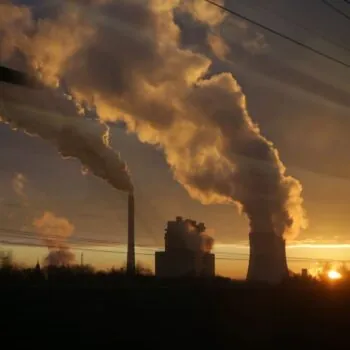Four UK coal-fired power plants are due to cease normal generation operations during March 2016, with a further power plant to close in summer 2016. This will see 8GW of capacity retired in total.
[Update: SSE have confirmed that three of the four units at Fiddlers Ferry will continue to operate for up to a further year]E3G's briefing note provides context on these closures in respect to the underlying dynamics of the UK electricity market and broader international trends.
Key points:
- The closing coal plants are ripe for retirement, having been constructed in the late 1960s or early 1970s.
- The closure of the coal plants and their replacement by low carbon generation is a transition that the power industry has been expecting, and preparing for, for many years.
- A similar level of coal plant retirements took place during 2012-14 as old coal plants were shut rather than upgraded to meet improved air pollution standards.
- As system operator, National Grid has many ways to preserve security of supply. ‘Power cuts’ for households are typically related to a failure of the local distribution network rather than a shortage of generation supply.
- The challenge for Government is to make the UK a more attractive place for investors in new energy products and services (including low carbon generation) to ensure that there is no temptation to pay the additional costs required to retain the remaining coal fired generation any longer than is necessary.
- Internationally, a broader structural shift away from coal-fired generation is underway. This reflects the age profile of coal plants as well as the increasing attractiveness of renewables and gas-fired generation in key markets.
UK domestic context
In 2014 the UK’s 10 remaining coal plants were responsible for 20% of total CO2 emissions. Nine of them featured in Europe’s top ‘Dirty 30’ coal plants. They are old, polluting and ripe for retirement. Five are set to close during 2016, totalling 8GW. This will leave just five in operation, totalling 10.5GW of capacity.
The Government announced in November 2015 that the UK will phase out coal-fired power generation by 2025, with a consultation on intended policy measures expected in Spring 2016. This approach provides a 10-year timeframe for remaining coal plants to retire.
Coal plants set to close in 2016
Table 1: Impending coal plant closures

UK coal plants are old, polluting and ripe for retirement
The UK’s remaining coal plants are ripe for retirement. Figure 1 below provides an overview of when they started operating, which was mainly in the late 1960s and early 1970s. The lone new coal plant addition in the 1980s (Drax) will approach 40 years of operation in 2025.
At the closure of Longannet in March 2016, Scottish Power highlighted that the life of the plant had been extended to 46 years from an original design life of 25 years. However, there are limits to life extension investments given the rising cost and complexity of repairs and refits.
Three other factors are driving the remaining UK coal plants towards retirement:
- improved air pollution standards;
- increasing cost of CO2 in response to climate change;
- competition from more efficient and lower-carbon electricity generation technologies.
Figure 1: Age profile of UK coal plants

Source: Carbon Brief
The second wave of coal plant closures
The UK has already successfully retired large amounts of coal capacity. Seven coal plants closed between 2012-14, totalling 8.4GW of capacity, in response to a phased increase in air pollution standards. This retirement was managed without incident by the UK electricity market and National Grid.
A similar approach is currently underway. New pollution standards will enter force across Europe from the start of 2016. The UK is providing a transitional period until 2020 so that plant operators can upgrade plants with pollution control equipment. Despite the UK’s climate change objectives, it is also providing capacity payments, which has successfully incentivised a number of coal plants to continue operating. However, the falling wholesale gas price and increase in carbon pricing through the carbon price support mechanism has shifted the market dynamic away from coal-fired generation.
The UK is not alone in closing coal plants
The UK is just one of many countries retiring coal-fired power plants. A broader structural shift is underway across OECD countries as the majority of coal fired plants reach the end of their working lives and face increased competition from renewables and gas-fired power generation.
Figure 2 below illustrates the trend of coal plant retirements across diverse markets including France, Canada and the USA. France has just a handful of coal-fired units; the Canadian Province of Ontario has completed a full coal phase out, while Alberta will phase out coal by 2030 (a significant step given it is home to half of Canada’s remaining coal generation). In the USA, states such as New York and Oregon have committed to coal phase out policies, with actions at state level reflecting these broader structural shifts and aligning with Federal policies.
Figure 2: G7 Coal Dynamics

Source: E3G G7 Coal Scorecard


